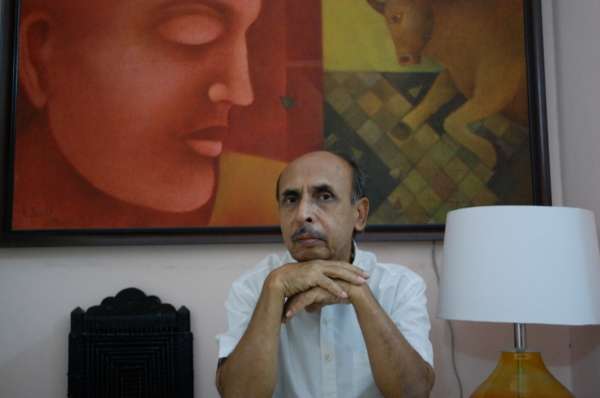
Indian art can be compared to a fable which can be told a hundred times over and every time something new will spring out from it. This illustrious and colorful journey is long and fascinating. The painting was identified as a distinct art form in ancient India. This could be proved by traces of this art form in different ancient epics and scriptures. Even pre-historic sites show pieces of evidence of wall paintings and murals which have miraculously survived the tides of time and human interference.
Distinctive features of Indian Art
Unity in Diversity
The Indian subcontinent witnessed many major and minor upheavals which lead to a change in power and administration. Astonishingly, various Indian art styles share common traits and consistency by which they can be unmistakably identified. Though the introduction of peculiar characteristics due to geographical, cultural, linguistic, and religious give them their unique identity. In short, the basis of Indian traditional art lies in common general principles. The regional deviations, nevertheless, made our indigenous art very rich and jovial.
How Indian Art Viewed the World
An observation of Indian art tells a lot about how our customs viewed the world. These paintings are remarked as inclusive and magnanimous as they represent mankind as harmonious and an indispensable part of the process of creation. One feels a sense of calm and peace while looking at these old marvels. Thus, we can say undeniably that our archaic culture saw the world as the divine manifestation of God which exists in all the things whether living or non-living. The animals, man, women, leaves, flowers, and the breeze with which the whole realm seems to flow are one.
It is Both-Religious and Non-religious
Indian art is seldom classified as religious art due to its strong inclination towards depicting mythologies. But, it would be wrong if we ignore the fact that a large section of this style is inspired by simple things in life. The relation of man with others, his beliefs, aspirations, desperation, melancholy, and satisfaction are depicted with grace and precision. We daily feel these emotions within ourselves. It seems that perhaps we have not changed with time as much as we think.
The style of Indian Art is not Religious
Indian art is generally believed to be religious because of the fact that subject-matter of Indian art is generally Gods. Here, everyone gets mistaken. They fail to understand that Indian art could be Hindu, Buddhist or Jain because of its themes and not because of its form. The style and types of Indian Paintings were influenced by time and region, and not religion. So to speak it can’t be said that Indian art comprises of Hindu or Buddhist art but they are inspired by the mysticism of these religions. If we compare an image of Buddha painting with an Image of Vishnu painted in the same era, a minute observation would prove that they are painted in similar styles. Therefore, it is proved that the manner of painting was not dominated by religion.
Common Symbology in Indian Art
Next time you buy Indian art, look for these marks. Some common symbols were used in religious themes depicted in archaic Indian Paintings. Artists of those times avoided imitating the concrete and dying world of Mrityulok ( a place where everything is temporary). Here is a list of signs which run through all religions like thread and means a great deal in mythological interpretation.
- Chakra- It shows that time is revolving in a cyclical motion. We take birth and we die to take birth again. A man could only be received from this chakra of life if he lives the life of a hermit.
- The Padma- Padma or lotus signifies creation as lotus also springs from earth’s bosom. The Brahma or the Creator also came out a lotus which sprung out from the navel of the Narayan.
- Ananta- This is generally represented as a snake but it is interpreted as water. Water is one of the basic elements which is having the power to give and take the life force.
- Swastika- The symbol holds a revered place in Aryan culture. It is the symbol of balance, divinity, spirituality, and peace.
- Purnakalasha- It is similar to the greek Cornucopia. The pot is always over-flowing with the abundance of things. It means prosperity and fulfilment.
- Kalpavriksha- It is the fabled tree which can bestow anything you want. It is the symbol of creation, imagination, and enlightenment.
- Mriga- The nibble deer is always running in the forest. So are our desires. Deer represents the desires and beauty that are sought by everyone in the forest of the world.
Anonymity and Universalism
Western ancient paintings are filled with instances of glorification. Modern sculptures of rulers or rich noblemen are present everywhere whereas Indian art is devoid of such things. We can trace the creator of artwork in medieval and even ancient western culture. But, it cannot be done here as hardly any artwork bears the insignia of its maker. This anonymity represents the characteristics of universalism in traditional art. This peculiarity of the style has astonished historians and archaeologists of different generations.
Therefore, Indian art doesn’t revolve around some specific things. It accommodates a larger picture into it. To understand the true meaning behind the essence of Indian art, one needs to be spiritually awakened. These paintings evoke feelings of compassion, inclusiveness, serenity, and embody the sacred philosophy of Vasudev kutumbakam. Various themes traverse into the same forgiving and selfless principles of Hindu culture. As held by the Honourable Supreme Court of India, “It is a matter of common knowledge that Hinduism embraces within the self so many diverse forms of beliefs, faiths, practices and worships that It is difficult to define term ‘Hindu’ with precision. So, it is evident from this that Hindu and religious can’t be used synonymously as per common usage. Prior understanding of the artistic lexicon may come in handy if you are going to buy Indian Art. Best of luck! :)





















